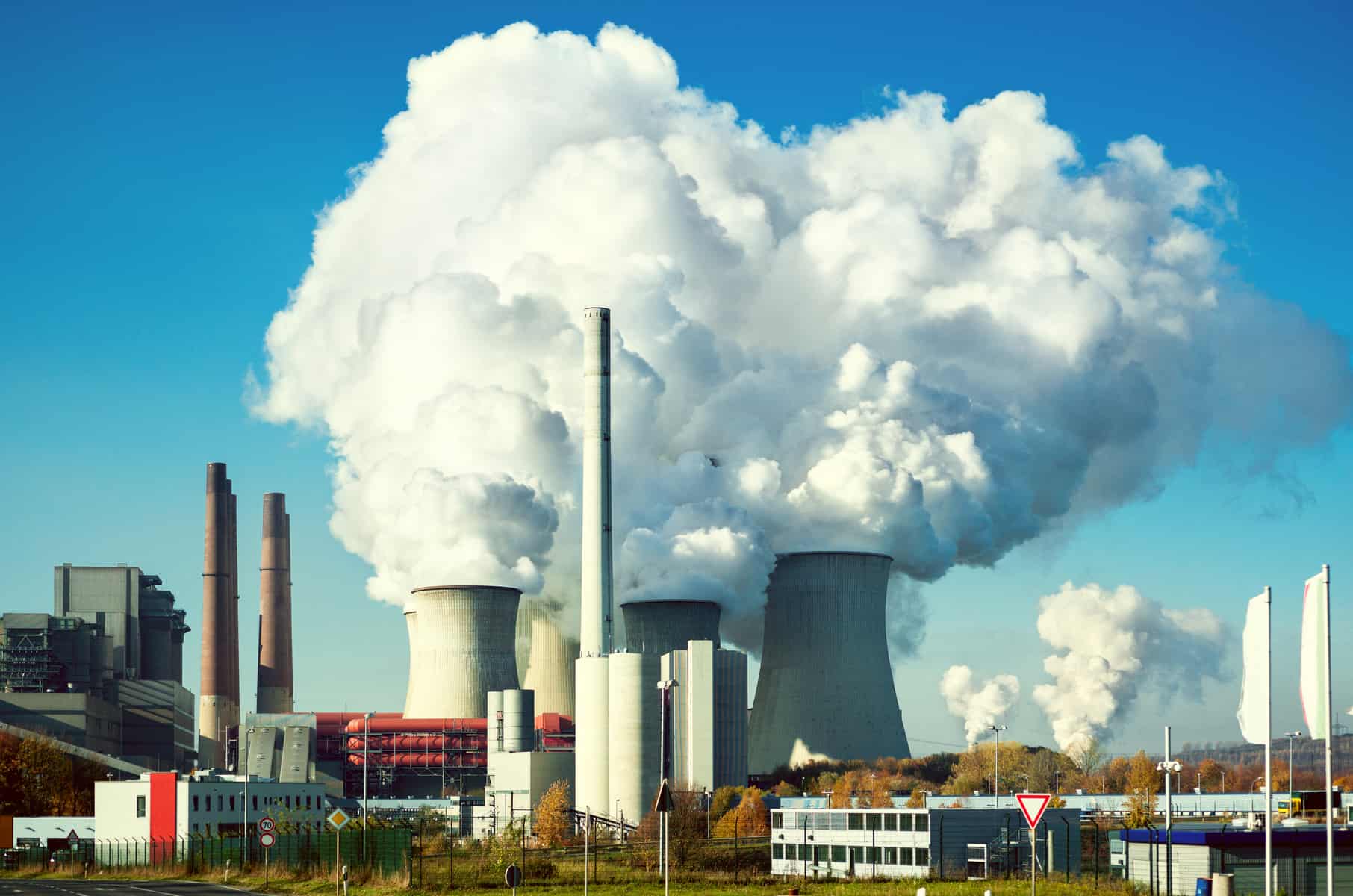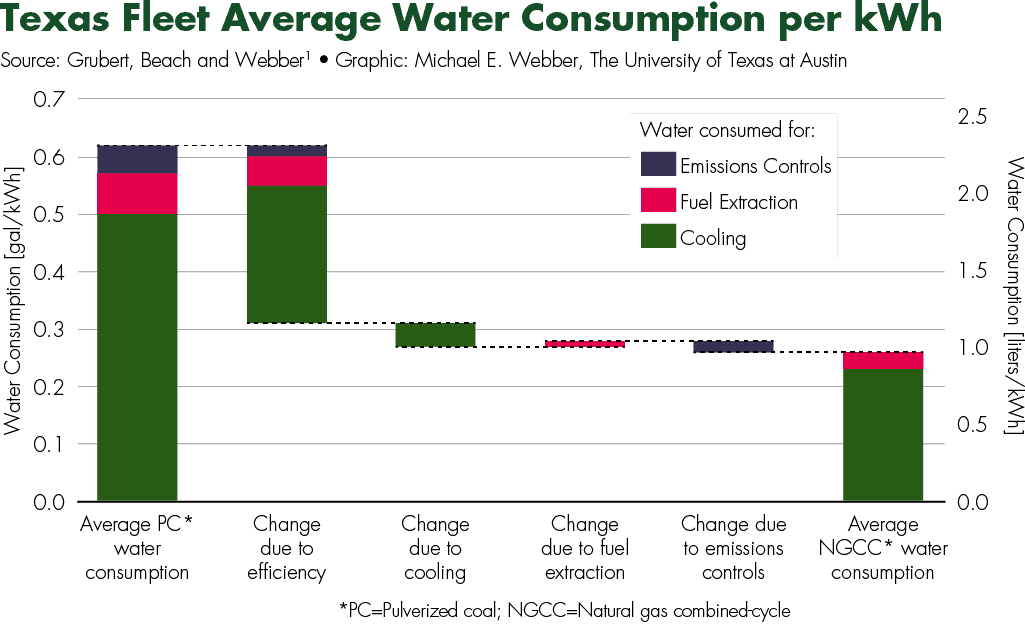
There are many possible technical solutions to problems at the energy-water nexus. One suite of those options includes source switching: switching to energy sources that use less water and water sources that use less energy. Source switching has been utilized before to solve resource problems. In response to the oil shocks of the 1970s, rampant fuel switching took place in the United States to reduce risks of volatile pricing and an uncertain supply of petroleum. In the power sector, utilities switched from oil, which at its peak was responsible for 17% of our electricity generation, to natural gas, coal, and nuclear fuels. By 2015, petroleum had fallen below 1% of the fuel mix for the power sector. The industrial sector switched from petroleum to natural gas for process heat, and the residential sector, which had switched from coal to heating oil a few decades before, started switching from heating oil to natural gas and electric heat.
U.S. energy producers and consumers shifted fuels in the 1970s for national security or economic reasons, but each change carries environmental implications as societies switch from dirtier to cleaner fuels or the other way around. Many power plants built in the 1970s and 1980s use water-intensive open-loop cooling systems because concerns over water scarcity were not as acute when the plants were constructed. Many rely on coal and nuclear material as a source of fuel. Planners at the time failed to forecast the water strains caused by population growth, economic growth, and climate change. Because most power plants are designed and built for a 40-year lifespan, many are approaching the end of their useful operational life. Each requires substantial investment to maintain operation, so owners must decide whether to retire or retrofit their power plants and whether to consider emerging water constraints in their designs.

In addition to being very thirsty, many older coal plants are also very dirty. They emit high volumes of carbon dioxide, particulate matter, and mercury, which makes them vulnerable to tightening emissions rules. Switching electricity sources to natural gas combined-cycle generators, solar panel systems, and wind farms would spare significant volumes of water while avoiding emissions. Even when considering that natural gas produced by hydraulic fracturing from shale formations needs more water than coal mining, natural gas combined cycle plants use less water over their entire lifecycle because of increased efficiency at the power plant itself, avoided emissions controls (which use water to scrub pollutants from flue gases at the smokestack), and partial air cooling within the combined cycle. Similarly in the transportation sector, switching from petroleum to natural gas can save water, and switching from first-generation biofuels made from corn to either petroleum or to biofuels made from plants that do not require irrigation, such as sugar cane or cellulosic switchgrass can save water.1Emily A. Grubert, Fred C. Beach, and Michael E. Webber, “Can switching fuels save water? A life cycle quantification of freshwater consumption for Texas coal- and natural gas-fired electricity,” Environmental Research Letters 7 (2012).


Ethanol made from corn (left) requires 30% more water than ethanol made from sugar cane (right).
Just as switching the energy source can save water, switching the water source can either save energy or freshwater or potentially both. A proverb says “In the desert, any water will do.” That includes degraded water such as brackish, saline, gray water, and treated effluent, which despite being nonpotable can be used in certain industrial and agricultural applications, to spare freshwater.
Image Credits: Alexander Kirch/Shutterstock.com; Firma V/Shutterstock.com; Johan Larson/Shutterstock.com.
Update your browser to view this website correctly.Update my browser now